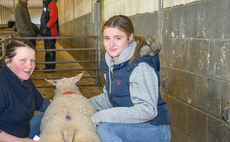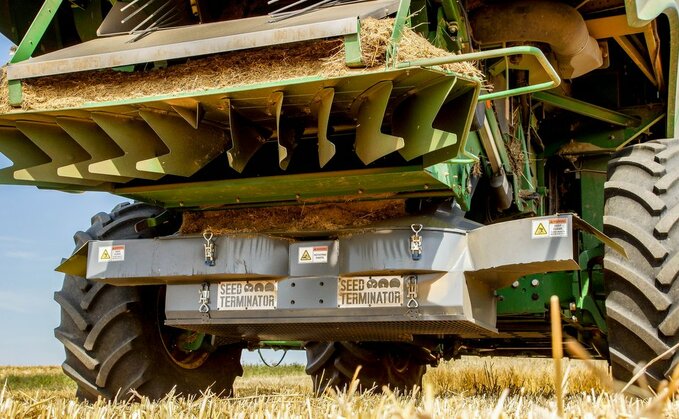
Reducing the weed seeds lost into the field before and during harvest shows potential to cut weed burdens. Jane Carley finds out more.
The prospect of herbicide resistance and the loss of active ingredients point increasingly to the need to explore cultural weed control.
Weed pressure begins with the previous harvest, as seeds are ejected in the chaff spread at the rear of the combine, and a number of systems have been developed to manage this issue.
H J Fairs and Son grows 2,000 hectares of combinable crops near Colchester, Essex. Alongside oilseed rape, wheat and peas, this includes specialist crops such as borage, echium, camelina, chia, quinoa and lunaria, produced for seed and for human consumption.
"Much of our production goes straight into the food chain, so we are very limited on the chemicals we can use," explains farm manager Chris Barron. "Hence our approach is to look at cultural controls - we hoe and inter-row spray for weed control, but once the crop becomes tall there is nothing that we can effectively use."
Research suggested that the Seed Terminator device might help to clean up crops at harvest and reduce the weed seed burden for the following year.
Developed in Australia, the Seed Terminator is an attachment fitted to the combine harvester to destroy weed seeds before they can fall into the stubble and subsequently germinate.
It is fitted in place of the chaff spreader and uses a pair of multi-stage hammer mills which process the residue coming from the sieves. The Tungsten-coated mills are designed to crush, shear and grind seeds to a fine powder, and feature stone doors and flexible flails to avoid damage from foreign objects in the crop. A choice of sieves can be inserted to match weed seed size for the greatest processing efficiency.
"There were no examples of the Seed Terminator for us to look at in this country, so we agreed to trial one for the importer Zurn UK," Mr Barron says.
The device was fitted by a self-employed Claas fitter to the farm's 10.50m cut 2014 Lexion 760 ahead of the 2020 harvest. "It took around two days to fit," explains Mr Barron. "While models are offered to suit different brands of combine, there is one common design for each brand, so there were a few alterations and compromises to make. It also uses the same power lines as the straw chopper."
The poor harvest in 2020 meant that the trial was a little inconclusive, but the Seed Terminator will be in action again this year. However, its first season has certainly provided food for thought. "The hammer mills run at 3,000rpm so they are very noisy, which means we have to think carefully about scheduling work close to housing, etc," Mr Barron comments. "It also soaks up 80-110hp, so there is a reduction in output and extra diesel costs."
Sieve size also affects the power consumption so fine tuning to suit what is in the field is key - medium works best for black-grass, and of more concern to HJ Fairs, ryegrass.
"The material produced is very fine, rather like flour, so there are less residues to tackle in following cultivations," he notes. "With a conventional chaff spreader, wheat seed that comes out of the back of the combine can grow in the rows, but because the seeds were pulverised, conditions for the following oilseed rape crop were noticeably better.
"We have seen an improvement, but it is not going to solve all our weed seed problems - some seeds will be lost into the ground before combining and some from the header. There are lots of positives but a few issues to consider."
HJ Fairs had planned to change the combine for this season, but will continue with the Lexion 760 for another year, Mr Barron comments.
"If we plan to fit the Seed Terminator to its replacement we will need a bigger combine to counteract the loss of horsepower. It will be interesting to see how it performs with the increased workload of a ‘normal' harvest this year."
The Seed Terminator is available in versions for Claas, John Deere, CNH and Agco combines and is priced at £80,000.
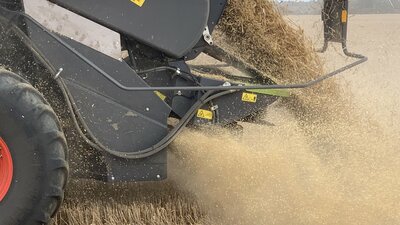

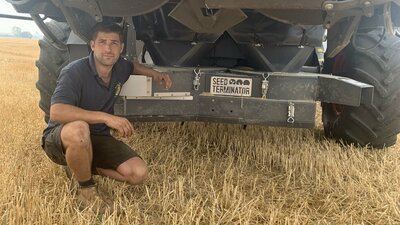
Field trials
Seed Terminator
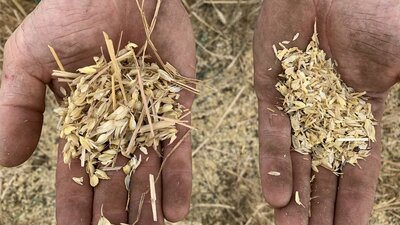
NIAB is undertaking trials of methods of harvest weed seed control (HWSC) as part of an EU-funded project. Weed management specialist John Cussans comments that seed milling has proved highly effective in countries with high populations of herbicide resistant weeds such as Australia and the USA.
"In those cases, the weeds in question mature at the same time as the crop. In the UK, however, crops and many of the weeds that cause concern such as black-grass and Italian Ryegrass are not in sync. In some years 95 per cent of the seed has gone from the plant before it goes through the combine."
This he suggests, will reduce the effectiveness of the technique for those weeds, but it may be of value for weeds such as wild oats and brome.
"Purchasers will have to consider the balance of investment over return. In other countries the acreages and, accordingly, the combines are so large that it is a small outlay by comparison, but the seed mill is also a useful tool to prevent seed spread from the combine itself between fields."
On the 2020 trial, which compared plots harvested with a conventional combine to those harvested using the seed mill, he comments: "It is clear that the seed mill had a significant effect on both the level of grassweed seeds in the crop residues, that were deposited after combining, and the grassweed seedling levels measured in the spring. The latter were lower where the seed mill had been fitted than on the conventional combine."
Cut and Collect
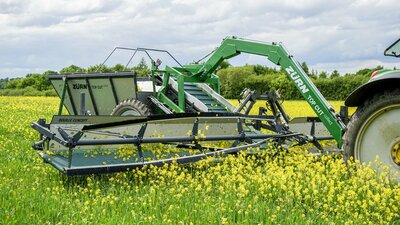
He adds that a technique called ‘weed surfing' which allows weeds to be targeted earlier and on multiple occasions, could be a useful approach, especially in conjunction with weed seed milling.
An example of this equipment also comes from Zurn UK, which offers the Top Cut Collect weed harvester - a tractor drawn device which cuts weed seed heads above the crop stand using two booms with double-knife cutter bars. A cross conveyor belt and a special helix reel feed the seed heads gently from the cutter bar to a belt which feeds them into a hopper, avoiding seed spillage. Launched in 2020, more extensive field demonstrations will be offered this year.
"The Top Cut Collect is especially suitable as it ‘forages' the seeds rather than just cutting them and dropping them back into the field," explains Mr Cussans. "We are planning trials this summer that should give a good basic view of how both systems work, comparing the benefits of the surfing and seed milling operations in conditions of greater weed pressure than was seen in 2020.
"Using mechanical weed control changes the ‘risk balance' for some farms, and it could also mean that growers do not have to chase every last per cent of weed control with herbicide," he points out. "Last year's results with the seed mill were far from the final word on the topic. It is hard to tell from this preliminary observation what the true value of this HWSC tactic might be in the UK, but it does highlight its potential."
























